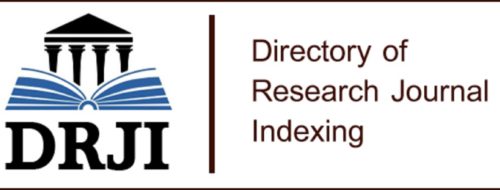APROVECHAMIENTO DE LOS RESIDUOS SÓLIDOS ORGÁNICOS DE LAS FRUTAS MEDIANTE DIGESTIÓN ANAEROBIA
ARTÍCULO DE REVISIÓN
DOI:
https://doi.org/10.46296/yc.v1i1.0005Palabras clave:
bioconversión, metano, subproductos, frutas, digestión anaerobiaResumen
Debido al gran volumen de residuos de frutas que se generan diariamente en diversas operaciones relacionadas con el procesamiento de frutas, verduras, entre otros, y las actividades económicas de origen agroindustrial, se plantea que es posible realizar la digestión anaeróbica de estos residuos biodegradables. Es por esta razón que la investigación tiene como finalidad discutir las bases teóricas que fundamentan el aprovechamiento de los residuos sólidos orgánicos de las frutas mediante procesos de digestión anaerobia. En la actualidad los residuos sólidos orgánicos (fracción húmeda) de la industria no tienen un objetivo específico para su uso, la mayoría de ellos son enviados al basurero. Dada la necesidad de aprovechar los residuos de cáscaras de frutas se requieren biorreactores debidamente diseñados y construidos. El uso de combinaciones de residuos sólidos orgánicos de las frutas en procesos de digestión anaeróbica puede potenciar la producción o rendimiento de metano y a su vez generar mayor productividad y factibilidad desde la perspectiva económica. En este sentido, la piña y naranja pueden ser evaluadas para determinar la relación óptima para obtener mayores rendimientos de producción energética (metano).
Palabras clave: bioconversión, metano, subproductos, frutas, digestión anaerobia.
Abstract
Due to the large volume of fruit residues that are generated daily in various operations related to the processing of fruits, vegetables, among others, and the economic activities of agro-industrial origin, it is suggested that it is possible to perform anaerobic digestion of these biodegradable residues. It is for this reason that the research aims to discuss the theoretical bases that underlie the use of organic solid waste from fruits through anaerobic digestion processes. Currently, organic solid waste (wet fraction) from industry does not have a specific objective for its use, most of it is sent to the landfill. Given the need to take advantage of fruit peel residues, properly designed and constructed bioreactors are required. The use of combinations of organic solid residues from fruits in anaerobic digestion processes can enhance methane production or yield and, in turn, generate greater productivity and feasibility from an economic perspective. In this sense, pineapple and orange can be evaluated to determine the optimal relationship to obtain higher energy production yields (methane).
Keywords: bioconversion, methane, by-products, fruits, anaerobic digestion.
Información del manuscrito:
Fecha de recepción: 04 de mayo de 2017
Fecha de aceptación: 26 de junio de 2017
Fecha de publicación: 10 de julio de 2017
Descargas
Citas
Amani, T., Nosrati, M., & Sreekrishnan, T. R. (2010). Anaerobic digestion from the viewpoint of microbiological, chemical, and operational aspects—a review. Environmental Reviews, 18(NA), 255-278.
An, B. X., Preston, T. R., & Dolberg, F. (1997). The introduction of low-cost polyethylene tube biodigesters on small scale farms in Vietnam. Livestock Research for Rural Development, 9(2), 27-35.
Balu, A. M., Budarin, V., Shuttleworth, P. S., Pfaltzgraff, L. A., Waldron, K., Luque, R., & Clark, J. H. (2012). Valorisation of orange peel residues: waste to biochemicals and nanoporous materials. ChemSusChem, 5(9), 1694-1697.
Cioabla, A. E., Ionel, I., Dumitrel, G. A., & Popescu, F. (2012). Comparative study on factors affecting anaerobic digestion of agricultural vegetal residues. Biotechnology for biofuels, 5(1), 39.
Demirbas, A., & Ozturk, T. (2005). Anaerobic digestion of agricultural solid residues. International Journal of Green Energy, 1(4), 483-494.
Escalona, M., Lorenzo, J. C., González, B., Daquinta, M., González, J. L., Desjardins, Y., & Borroto, C. G. (1999). Pineapple (Ananas comosus L. Merr) micropropagation in temporary immersion systems. Plant Cell Reports, 18(9), 743-748.
Garcia-Peña, E. I., Parameswaran, P., Kang, D. W., Canul-Chan, M., & Krajmalnik-Brown, R. (2011). Anaerobic digestion and co-digestion processes of vegetable and fruit residues: process and microbial ecology. Bioresource Technology, 102(20), 9447-9455.
Gavilanes-Terán, I., Paredes, C., Pérez-Espinosa, A., Ángeles Bustamante, M., Gálvez-Sola, L., & Jara-Samaniego, J. (2015). Opportunities and challenges of organic waste management from the agroindustrial sector in South America: Chimborazo province case Study. Communications in Soil Science and Plant Analysis, 46(sup1), 137-156.
Instituto de Ingeniería. (2012). Disponible en: http://www.smbb.com.mx/revista/Revista_2012_2/Revista_SMBB_2012_V16_n2.pdf.
Murillo, L. O. (2010). Ficha Técnica de industrialización de Piña (Ananas comosus L.). Recuperado el 04 de Septiembre de 2015, de Dirección de Mercadeo y Agroindustria Área Desarrollo de Producto. Disponible en: http://www.cnp.go.cr/biblioteca/fichas/pina_FTP.pdf
Preston, T. R., & Rodríguez, L. (2002, March). Low-cost biodigesters as the epicenter of ecological farming systems. In Proceedings biodigester workshop.
Rizk, M. C., Bergamasco, R., & Tavares, C. R. G. (2007). Anaerobic co-digestion of fruit and vegetable waste and sewage sludge. International Journal of Chemical Reactor Engineering, 5(1).
Saval, S. (2012). Aprovechamiento de residuos agroindustriales: pasado, presente y futuro. BioTecnología, 16(2), 14-46.
Xu, Q., Chen, L. L., Ruan, X., Chen, D., Zhu, A., Chen, C., ... & Chen, J. (2013). The draft genome of sweet orange (Citrus sinensis). Nature genetics, 45(1), 59.
Zhao, C., Yan, H., Liu, Y., Huang, Y., Zhang, R., Chen, C., & Liu, G. (2016). Bio-energy conversion performance, biodegradability, and kinetic analysis of different fruit residues during discontinuous anaerobic digestion. Waste management, 52, 295-301.





























